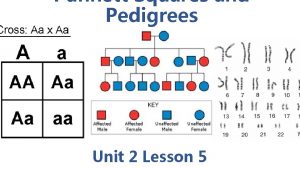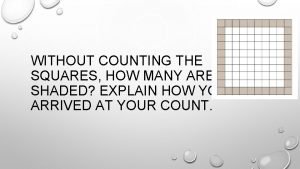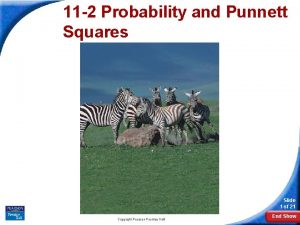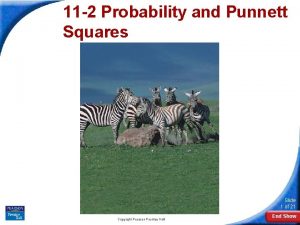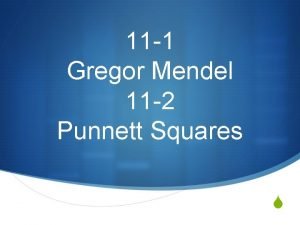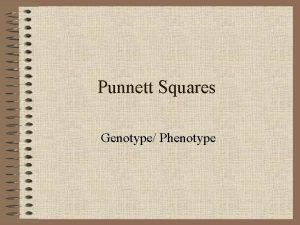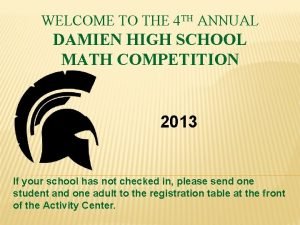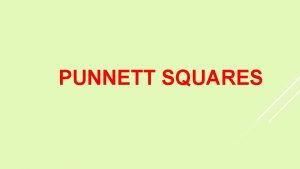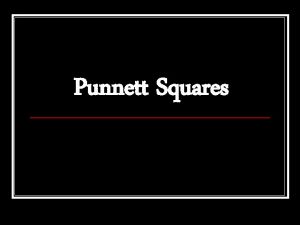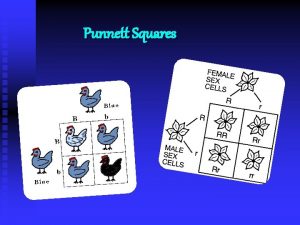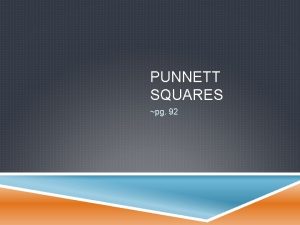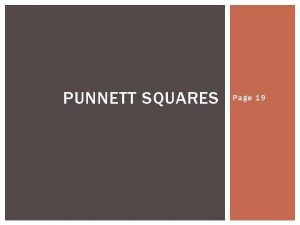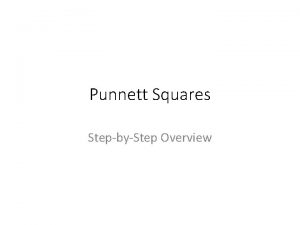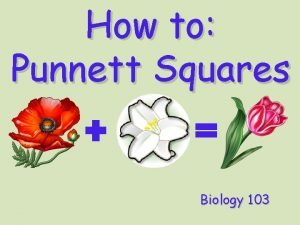Unit 2 Lesson 5 Punnett Squares and Pedigrees









- Slides: 9

Unit 2 Lesson 5 Punnett Squares and Pedigrees Copyright © Houghton Mifflin Harcourt Publishing Company

Unit 2 Lesson 5 Punnett Squares and Pedigrees Squared Away How are Punnett squares used to predict patterns of heredity? • One tool for understanding the patterns of heredity is a diagram called a Punnett square. • A Punnett square is a graphic used to predict the possible genotypes of offspring in a given cross. Copyright © Houghton Mifflin Harcourt Publishing Company

Unit 2 Lesson 5 Punnett Squares and Pedigrees How are Punnett squares used to predict patterns of heredity? • Each parent has two alleles for a particular gene. • An offspring receives one allele from each parent. • Each compartment within the Punnett square shows an allele combination in a potential offspring. Copyright © Houghton Mifflin Harcourt Publishing Company

Unit 2 Lesson 5 Punnett Squares and Pedigrees How can a Punnett square be used to make predictions about offspring? • A Punnett square does not tell you what the exact results of a cross will be. • A Punnett square only helps you find the probability that a certain genotype will occur. • Probability is the mathematical chance of a specific outcome in relation to the total number of possible outcomes. Copyright © Houghton Mifflin Harcourt Publishing Company

Unit 2 Lesson 5 Punnett Squares and Pedigrees How can a Punnett square be used to make predictions about offspring? • Probability can be expressed in the form of a ratio, or an expression that compares two quantities. • Probability can also be expressed as a percentage. • A percentage states the number of times a certain outcome might happen out of 100 chances. Copyright © Houghton Mifflin Harcourt Publishing Company

Unit 2 Lesson 5 Punnett Squares and Pedigrees How can a pedigree trace a trait through generations? • A pedigree is another tool used to study patterns of inheritance. • A pedigree traces the occurrence of a trait through generations of a family. • Pedigrees can be useful in tracing sex-linked disorders, or disorders associated with an allele on a sex chromosome. Copyright © Houghton Mifflin Harcourt Publishing Company

Unit 2 Lesson 5 Punnett Squares and Pedigrees How can a pedigree trace a trait through generations? • A woman who is heterozygous for a trait is called a carrier. • She is called a carrier because she can carry or pass on the trait to her offspring. Copyright © Houghton Mifflin Harcourt Publishing Company

Unit 2 Lesson 5 Punnett Squares and Pedigrees How can a pedigree trace a trait through generations? • Pedigrees can be useful in tracing inherited disorders such as cystic fibrosis. Copyright © Houghton Mifflin Harcourt Publishing Company

Unit 2 Lesson 5 Punnett Squares and Pedigrees Saving the European Mouflon • Scientists used genetic techniques to show the European mouflon sheep can be saved from extinction. • When a very small population of animals interbreeds, there is a greater risk that harmful genetic conditions may appear. • Researchers can identify and breed genetically dissimilar European mouflons in a laboratory. Through this process, scientists hope to lower the risk of inherited disorders. Copyright © Houghton Mifflin Harcourt Publishing Company
